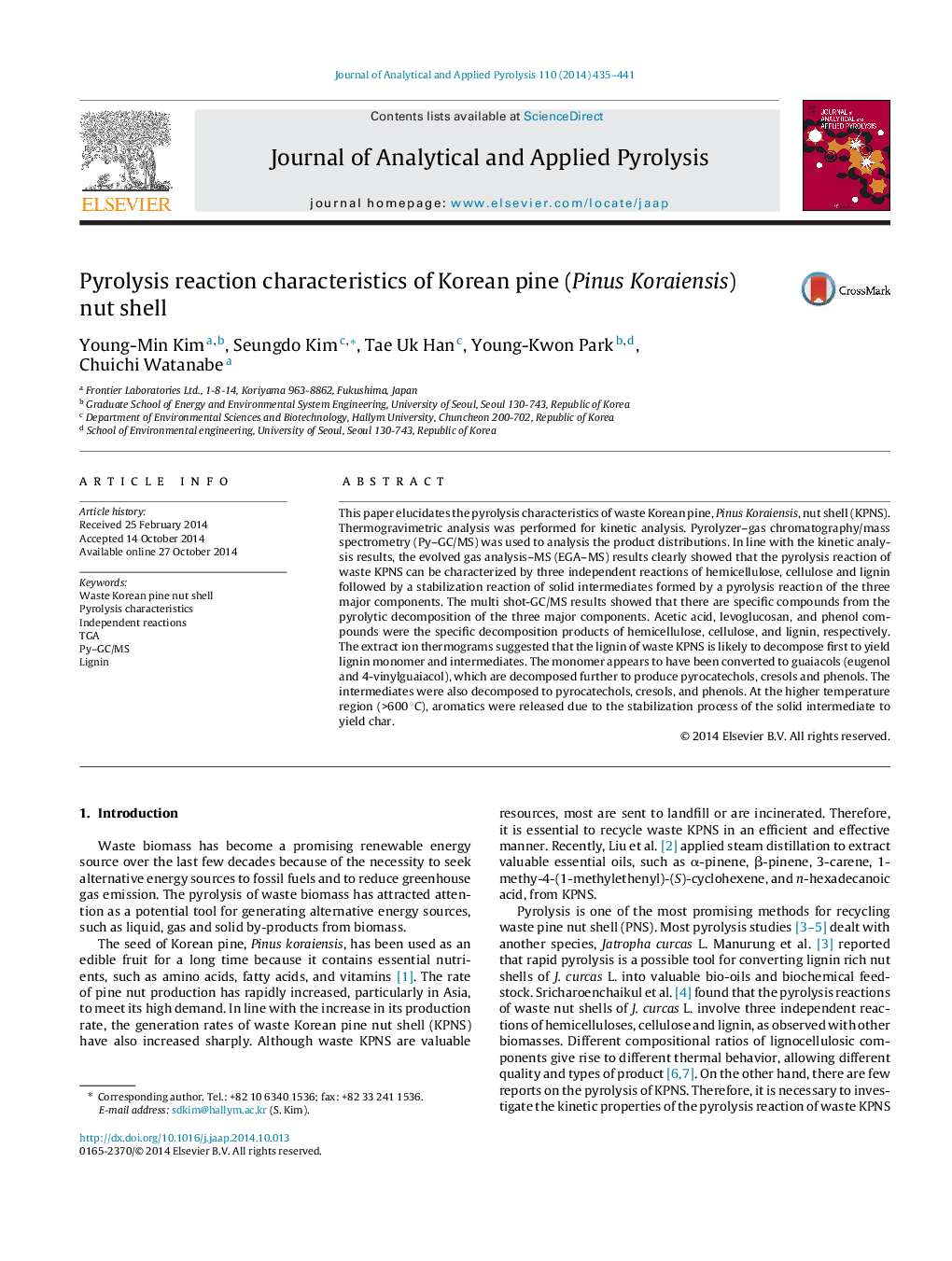| Article ID | Journal | Published Year | Pages | File Type |
|---|---|---|---|---|
| 1197337 | Journal of Analytical and Applied Pyrolysis | 2014 | 7 Pages |
•Pyrolysis of waste Korean pine nut shell (KPNS) was performed using by TGA and Py–GC/MS.•The pyrolysis of KPNS would be accounted for three independent decomposition reactions of hemicellulose, cellulose, and lignin.•Large amounts of phenolic compounds were produced due to the high lignin content of KPNS.
This paper elucidates the pyrolysis characteristics of waste Korean pine, Pinus Koraiensis, nut shell (KPNS). Thermogravimetric analysis was performed for kinetic analysis. Pyrolyzer–gas chromatography/mass spectrometry (Py–GC/MS) was used to analysis the product distributions. In line with the kinetic analysis results, the evolved gas analysis–MS (EGA–MS) results clearly showed that the pyrolysis reaction of waste KPNS can be characterized by three independent reactions of hemicellulose, cellulose and lignin followed by a stabilization reaction of solid intermediates formed by a pyrolysis reaction of the three major components. The multi shot-GC/MS results showed that there are specific compounds from the pyrolytic decomposition of the three major components. Acetic acid, levoglucosan, and phenol compounds were the specific decomposition products of hemicellulose, cellulose, and lignin, respectively. The extract ion thermograms suggested that the lignin of waste KPNS is likely to decompose first to yield lignin monomer and intermediates. The monomer appears to have been converted to guaiacols (eugenol and 4-vinylguaiacol), which are decomposed further to produce pyrocatechols, cresols and phenols. The intermediates were also decomposed to pyrocatechols, cresols, and phenols. At the higher temperature region (>600 °C), aromatics were released due to the stabilization process of the solid intermediate to yield char.
